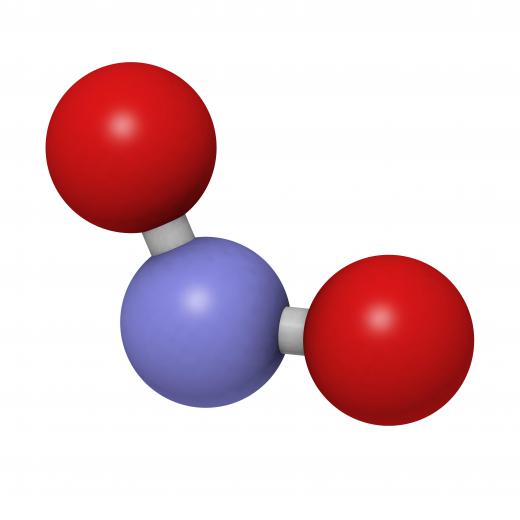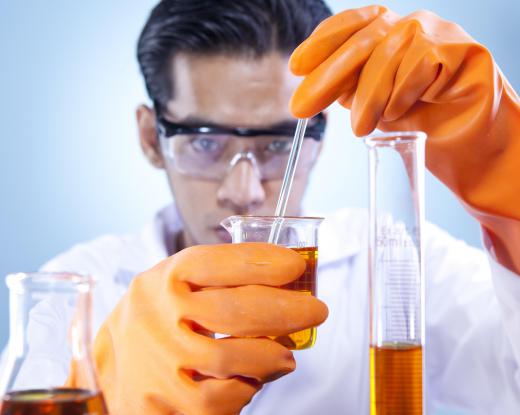What is a Chemical Equation?
A chemical equation is a representation of molecular interactions in their relative quantities. In a chemical reaction, the way atoms are arranged with each other changes. The atoms’ internal structures are not affected, but energy, usually in the form of heat, is either released or absorbed during a chemical reaction. The chemical makeup of the reactants, or pre-reaction ingredients, is written on the left side of a chemical equation. The products, or resulting compounds, are written on the right side.
The chemical makeup of a compound is represented with a chemical formula. A chemical formula indicates how many atoms of each element are present in one molecule, or stable collections of atoms. For example a water molecule has the chemical formula H2O because it has two atoms of hydrogen and one atom of oxygen. The chemical formulas of multiple molecules in an equation are separated by plus signs.

Though a large amount of matter may be reacting, a chemical equation is only concerned with the ratios of the molecules involved. The reactants and the products in a chemical reaction can only react in specific proportions. This is because atoms are neither created nor destroyed; whichever atoms are present before the reaction must remain afterward. For this reason, it is necessary to balance chemical equations. A chemical equation shows a balanced reaction in its smallest possible quantity.

It may be necessary to add coefficients to the left side of chemical formulas to achieve a balanced equation. In many reactions more than one of a particular molecule is present—even in the fundamental, or smallest possible, instance. If two atoms of an element are present but are not in the same molecule, a coefficient of 2 is used instead of a subscript. For example, 2 H2O is two water molecules, or 4 hydrogen atoms and 2 oxygen atoms.
The field of studying measurable relationships between chemical reactants and products is called stoichiometry. It is useful in calculating the amount of product that can be created with a given amount of reactant. In real-world chemical reactions, it is generally impossible to get 100% of the reactants to turn into products. This is because matter is separated in space and reactants need to be in contact with other to react.
Additional notation in a chemical equation can reveal more information about the reaction. When atoms or molecules have an electrical charge, for instance, this number is written in the superscript with a plus or minus sign for a positive or negative charge. Other equation elements include letters in parenthesis, which are used for indicating whether a compound is solid, liquid, or gas. Symbols also may be placed between the reactants and products to specify the reaction rate and whether energy is released or absorbed.
AS FEATURED ON:
AS FEATURED ON:












Discuss this Article
Post your comments